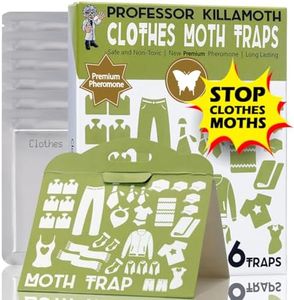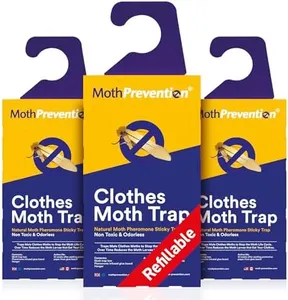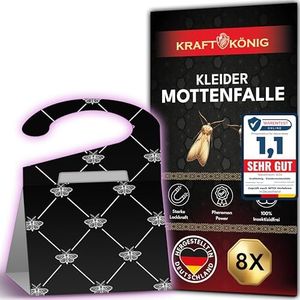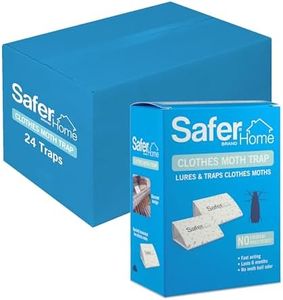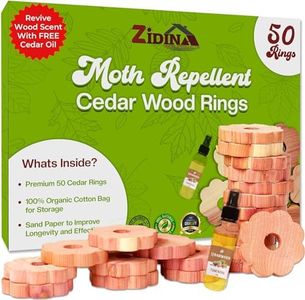We Use CookiesWe use cookies to enhance the security, performance,
functionality and for analytical and promotional activities. By continuing to browse this site you
are agreeing to our privacy policy
10 Best Clothes Moths Controls
From leading brands and best sellers available on the web.Buying Guide for the Best Clothes Moths Controls
Choosing the right method or product to control clothes moths is important to protect your clothing and textiles from being damaged. When deciding on clothes moth controls, think about the size of the infested area, the type of items you want to protect, and your household's sensitivity to chemicals or scents. Understanding how each control works can help you match your needs, whether you're looking for a quick solution or long-term prevention.Type of ControlThis refers to the general approach the product or method uses, such as traps, natural repellents, sprays, or storage solutions. Each type is suited to a different situation. Traps are good for monitoring and reducing light infestations, natural repellents (like cedar or lavender) provide ongoing protection with minimal chemicals, sprays can offer fast acting solutions for direct moth control, and storage solutions help prevent future infestations by creating physical barriers. Choose based on whether you need active elimination (for an existing problem) or prevention (to avoid future infestations).
Active Ingredient or MaterialThis is the substance working to control moths, such as pheromones, insecticides, or natural oils. It's important because some people prefer chemical-free solutions either for safety reasons or sensitivities, while others may need a stronger, fast-acting chemical solution. Pheromone-based traps attract and trap moths, oils like cedar repel them, and insecticides kill them directly. Decide based on who will be exposed (children, pets), your sensitivity to odor, and how aggressive the approach should be.
Coverage AreaCoverage area tells you how much space the product can effectively protect or treat. Smaller solutions are suited for closets or drawers, while larger or more powerful products might protect a whole room. Think about how much space is affected—if just one storage box or closet, a smaller product works. For bigger problems, multiple or more powerful items might be needed.
Duration of EffectivenessThis tells you how long the product or solution remains effective after being applied or installed. Some traps or sachets last for a few weeks, while others may work for months. Spray treatments may need to be reapplied periodically. Longer-lasting options are lower-maintenance and better for prevention, while shorter duration might be enough for a one-time treatment. Consider your willingness to reapply or replace products when choosing.
Ease of UseEase of use refers to how simple it is to put the product in place and maintain it. Some controls are as simple as hanging or placing a sachet, while others may require spraying or occasionally checking and replacing traps. If you prefer convenience and minimal effort, look for low-maintenance products. If thoroughness is more important, a solution with a few more steps might be worthwhile.
Safety and ScentThis spec covers whether a product releases odors and if it’s safe around pets or kids. Some people are sensitive to fragrances or chemicals, while others prefer a noticeable scent like cedar or lavender. If safety and scent matter, pay extra attention to labels stating non-toxicity, fragrance-free, or natural ingredients. Pick what aligns best with your household’s needs and sensitivity.
